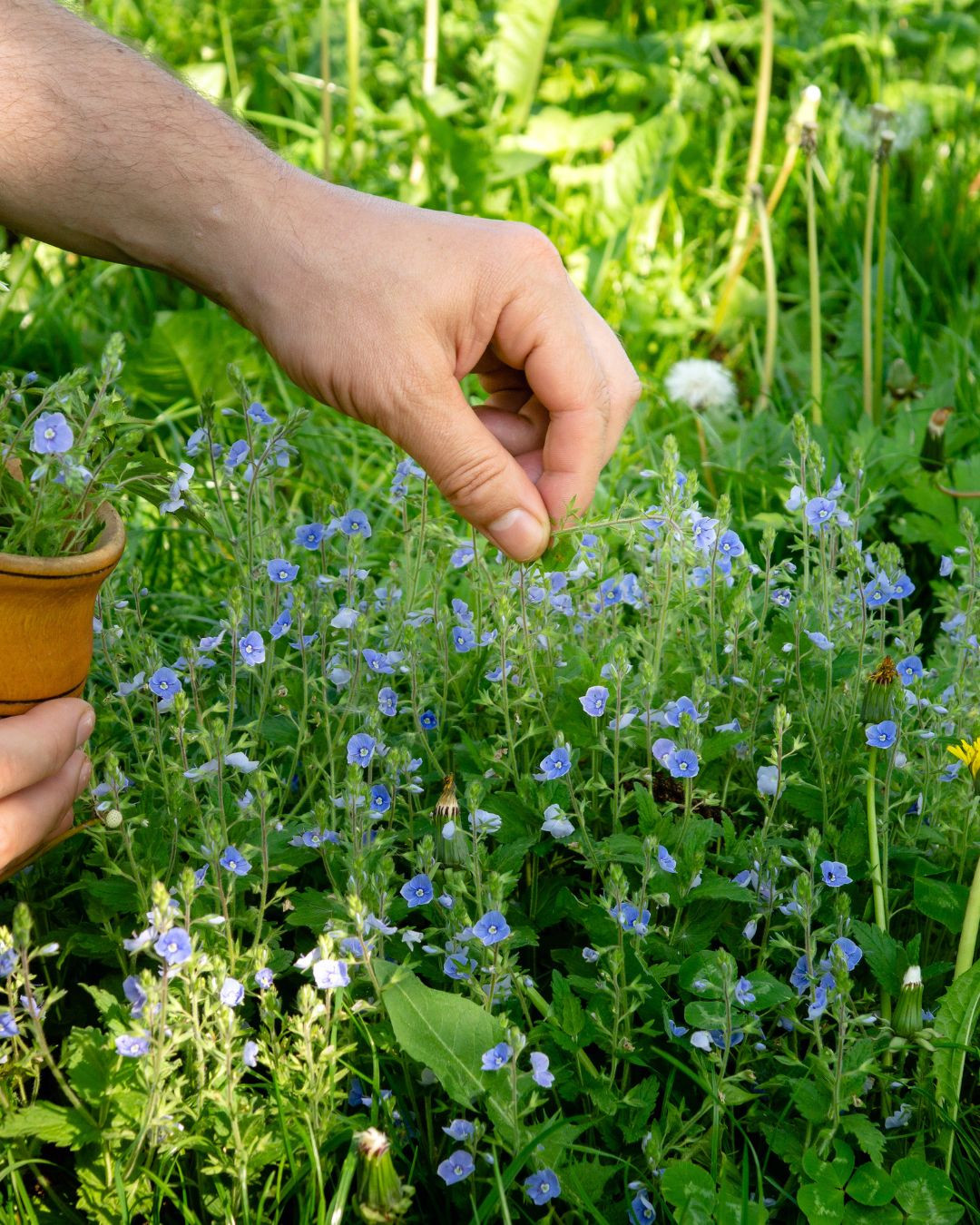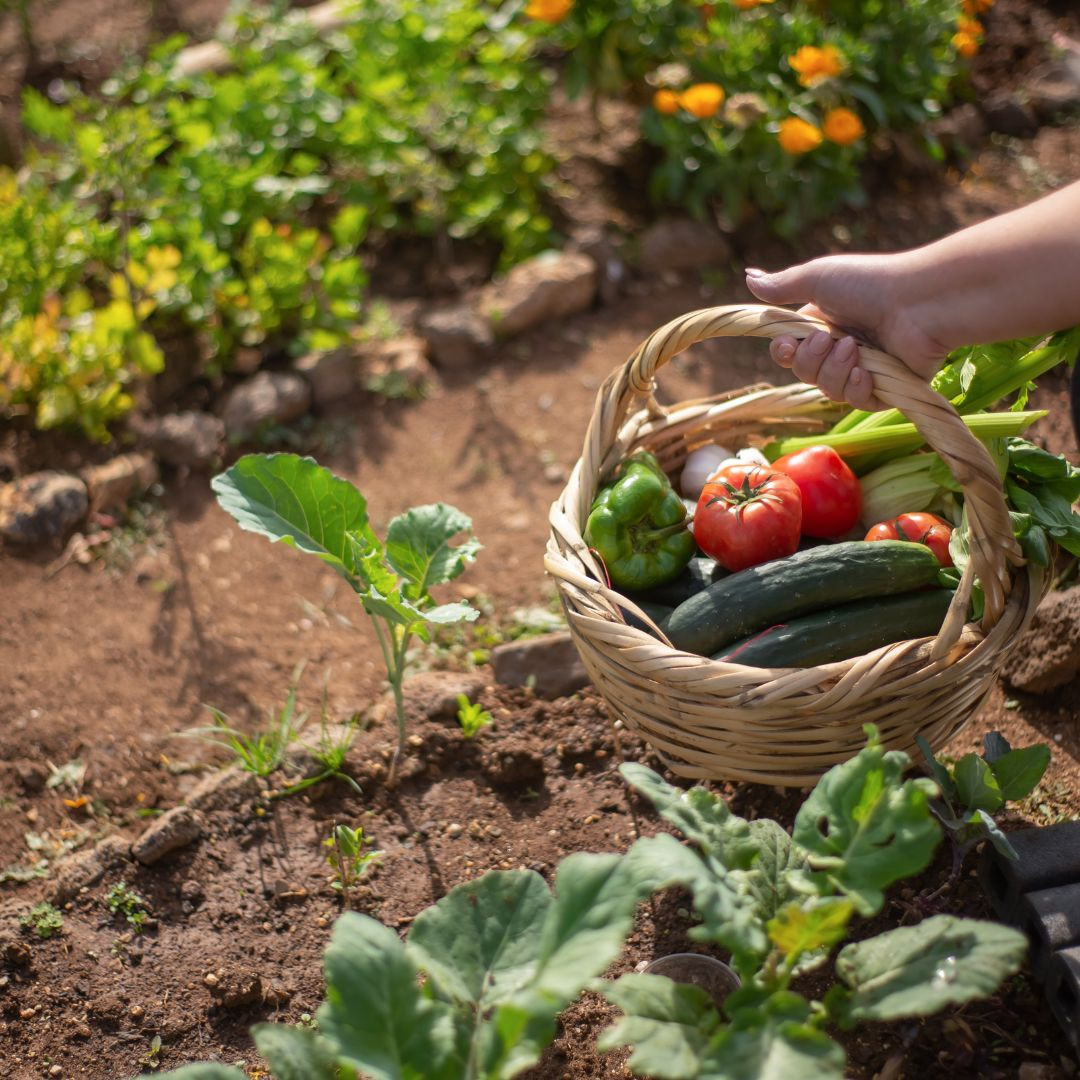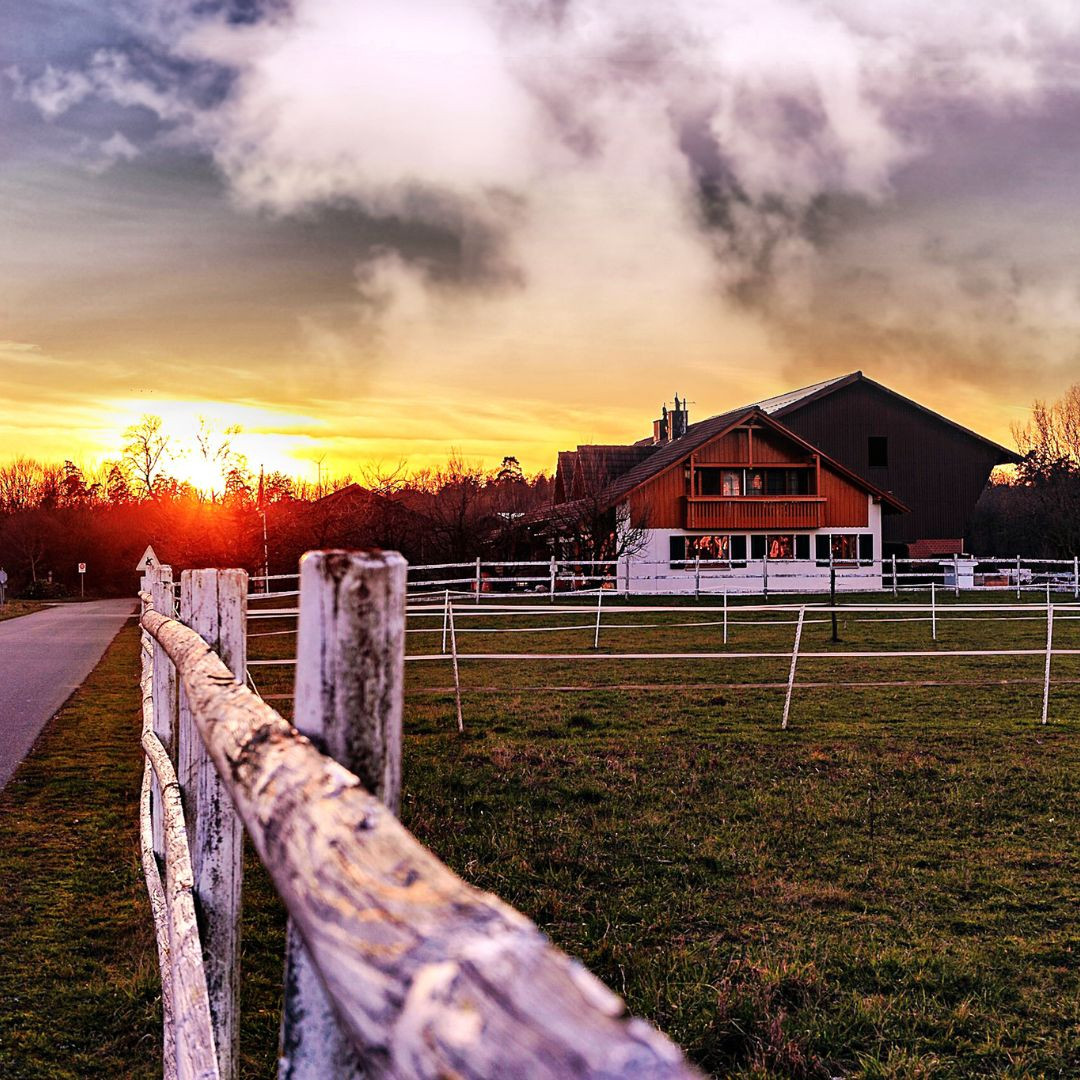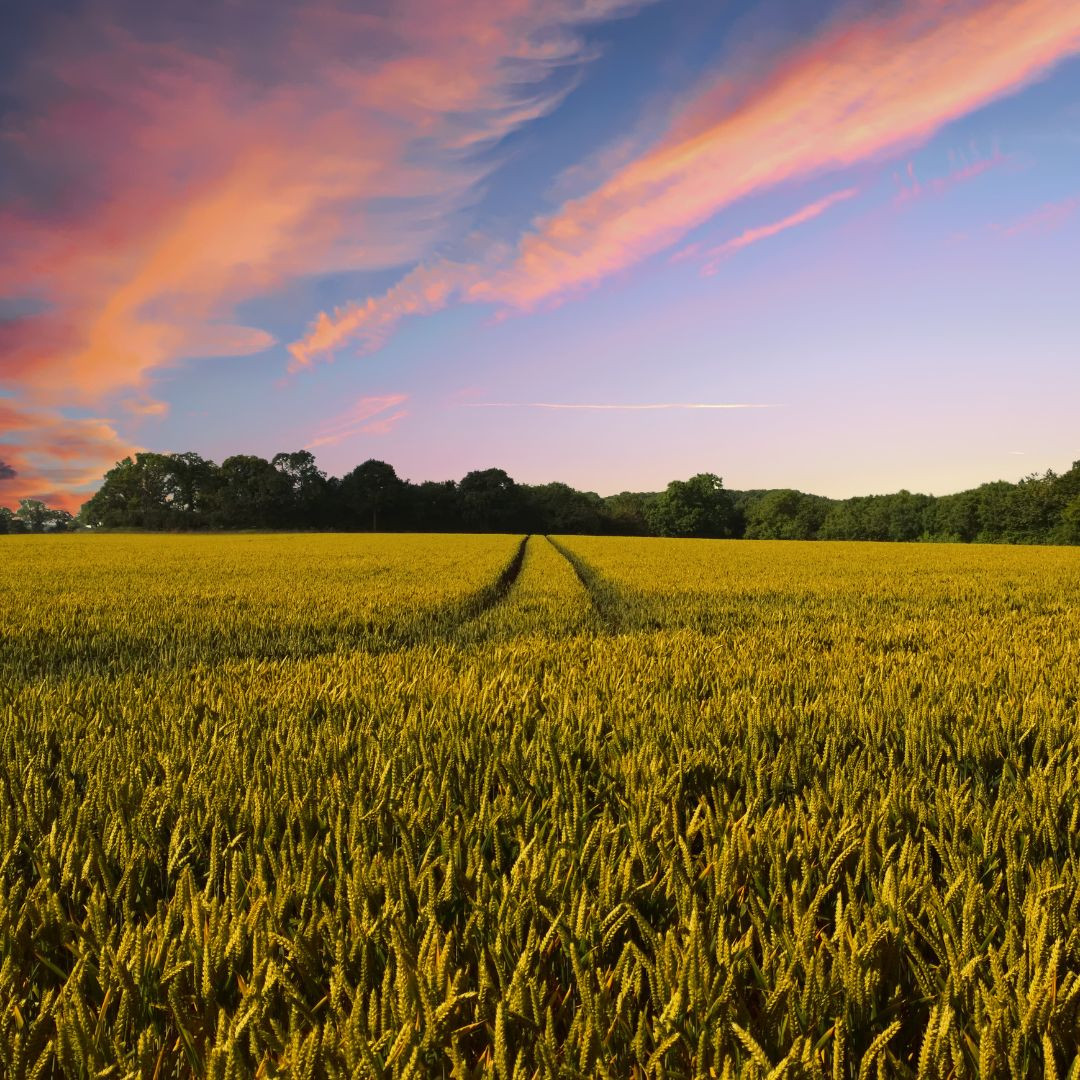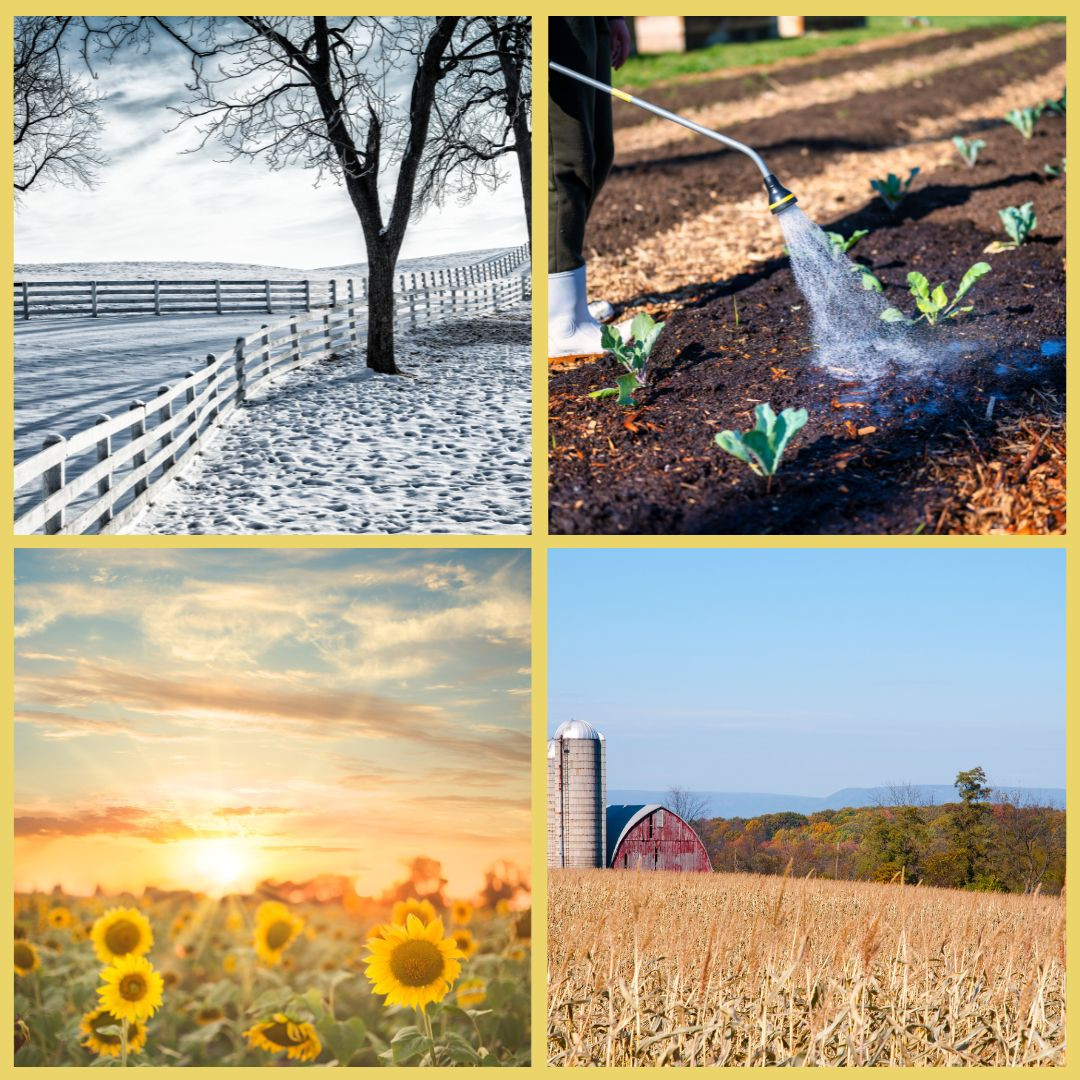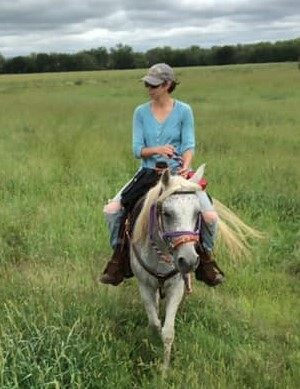
This post may contain affiliate links, which means that I may receive a commission if you make a purchase using these links, with NO additional cost to you.
I did not start my journey intending to dive into the homesteading lifestyle. I thought that was 40+ acres of grass to run my animals on. I had 3.4 acres to work with in the middle of crop country. I just wanted to be able to feed my family.
I grew up on the farm and remember my grandma growing a beautiful garden and my mom canning every summer. My mom, try as she may, has never had a green thumb. When I was first married, I didn’t even grow a garden for the first couple years. We were both still in college and traveling back and forth between school and his family farm. We had my 2 horses, 1 dog, and jobs. I was working 45 minutes away from home, while he worked on the family farm.
When we moved home in 2015, he grew the first garden. A very rough looking sweetcorn patch. I had some herbs in pots up by the house. The following year, we got a fence up, because of rabbits, and I had a small garden, of tomatoes, cucumbers, and peppers. The things I remember my mom trying to grow.
We actually debated the size of the garden. I wanted it smaller and a bigger fire pit area, he thought it should be bigger. Fun fact, he was right. 2-3 years later, my oldest daughter and I were moving the fire pit brick by brick and making the garden bigger.
In 2019 I was pregnant with my son and looking at the cost of what daycare for 2 would cost. I was also moving into a season where I no longer liked being away from my family so much. I loved my job but seeing my child for 3-4 hours every weekday wasn’t cutting it. The only problem was, my job was providing insurance, and groceries. We were using my husband’s income for savings and home improvements.
No matter how I ran the numbers, I couldn’t continue to work and still buy gas to get there and groceries to feed my family. I ran the numbers with just my husband’s income, what insurance options we found, and no daycare, it was going to be tight, but do able. I told my boss I wouldn’t be back after I had my son.
Now how to make the grocery bill smaller. Then I remembered my grandma’s garden and stories of great grandma’s garden. They grew everything! So, I dug in over winter. Looked at what my family was eating vegetable wise and figured out how to grow it. Every year my garden has expanded in space and variety.
I learned how to preserve what I grew and how to cook with whole food ingredients, eliminating all the boxed dinners. 2019 also brought a new frontiers of food allergies and learning to cook without gluten and dairy.
We were fortunate to be able to get ½ a beef every year with my husband’s job. 2020 I bought my first chickens. 2021 brought guineas, ducks, and turkeys. 2022 came the geese and honeybees. In 2022 I also learned how to butcher chickens.
I started a poly culture orchard in 2021 as well, to raise some of our own fruit as well. The advantage of the poly culture orchard is once it is established, it takes care of itself with very little maintenance and care.
This year, 2023, we added our milk cow and a small greenhouse to learn in.
Next year, 2024, were planning on adding pigs.
Today, we raise 95% of our own protein and 70% of our own vegetables. The orchard is still maturing but will one day produce 50% of our fruits.
Our family is now 5 strong. I spend maybe $300/month on groceries. Some months we trade for groceries. Yes, it would be nice to spend more on groceries, but we’re not able to yet. However, we eat well and won’t starve either.
I started with a simple garden but grew as I had the capacity and the need for another food category. I started small and added as I got comfortable with what was already here.
As I've grown in my journey as an entrepreneur, mom, gardener, and livestock owner, I struggled to find a planner that met my needs and kept me organized. So, I MADE MY OWN. You can look at it on the link below and buy it on amazon below.
Don't want the whole calendar part? I got you! I pulled the gardening and animal care pages out and put them in a book all their own.
Wanting a community to lean into? Join the FREE Helping Your Family Homestead for Food group! This community is for the Mommas, looking to stay home and raise their kids, but unsure how to keep everyone fed and make ends meet. I share tips from my journey from the office to half the income and feeding my family from home, while maintaining good nourishing food. Tips include gardening, bulk buying, caning/preserving, livestock, homesteading, and home remedies. Your family is precious, and this group is to help you gain the knowledge and tools to keep your family well and not reliant on outside professionals. Remedies and tips are easy and simple for the busy momma, time is precious after all, including pregnancy, birth, young kids, and illness. Trust your Momma gut again! This community offers the resources + community you need to help get started on your journey and prepare for whatever future you envision.
Starting to garden doesn't have to be hard! I gathered all the tips I've learned over my gardening learning curve and made them into a simple course to jump start your gardening your life.
Supporting Your Family Naturally from the Inside Out community!! This community is for Mommas, looking to Support Your Family from Nature for Wellness. Tips range from nutrition, herbals, detoxing, natural cleaning, and essential oils. Basically, all the things I’ve learned slowly over the past 5+ years of my journey. We have moved off Facebook, to better serve our community and be able to discuss openly options for providing for your family in the best way possible.
Join the FREE Community
Join the FREE Community
I've had 3 very different pregnancies. After the first traumatic birth, I learned better and how to care for my body naturally and prevent common pregnancy and birth problems before they arise. This quick course will get you the tools you need to have a naturally healthy pregnancy, labor, and delivery. My first pregnancy I had a normal western medicine all the things pregnancy. My second? I flipped to completely natural, no medicine. Bonus: Preventing Preeclampsia Without the Aspirin & Healing from Birth Trauma
For more on wellness tips click here:
For more on homesteading on your budget click here:
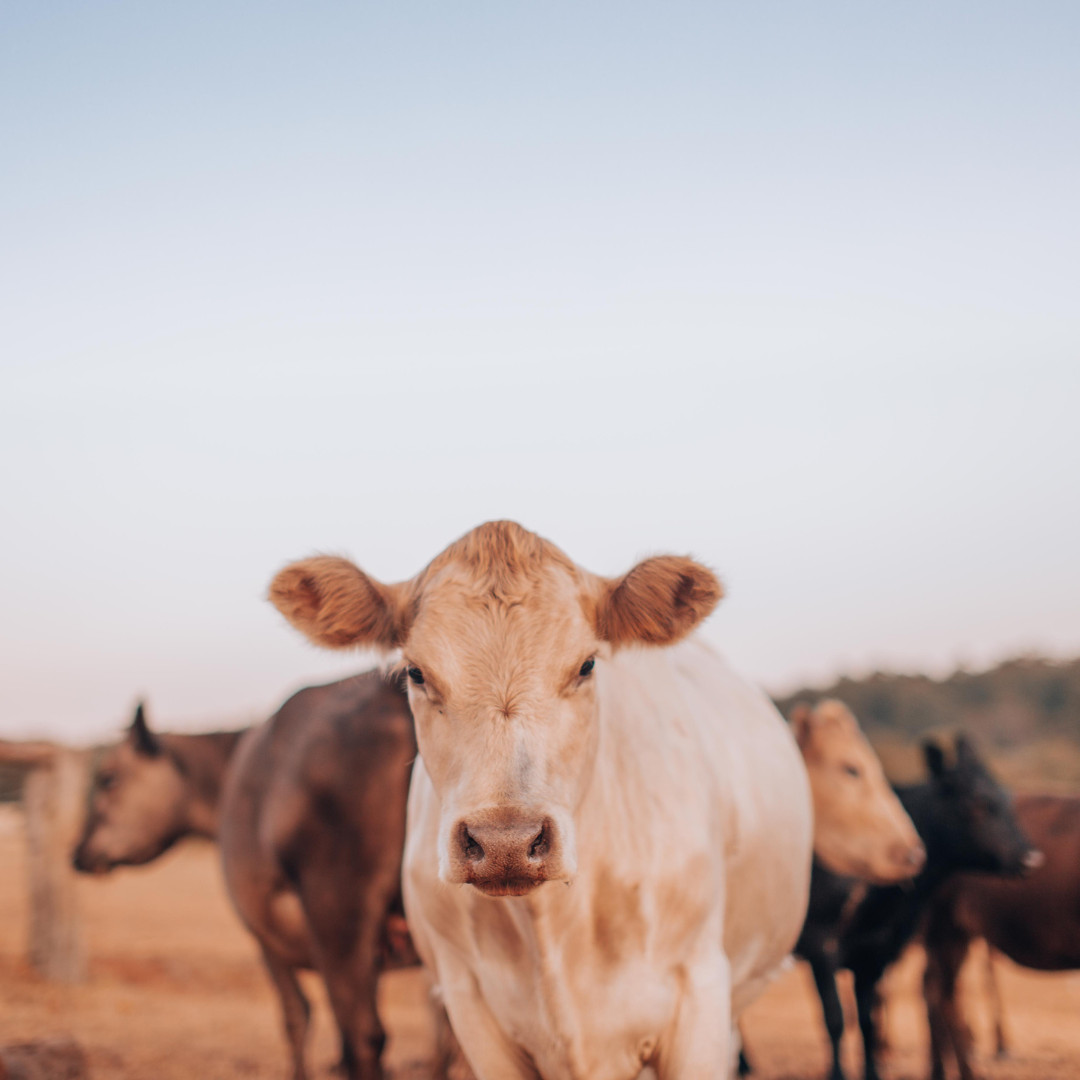
This post may contain affiliate links, which means that I may receive a commission if you make a purchase using these links, with NO additional cost to you.
A cow may not be the first animal to be added to your homestead, but at some point, many do. Cows bring so much to the homestead, it’s hard to not add one eventually. There are a few major differences in breeds to consider when selecting your cows. The biggest difference to consider is your desire for beef or milk. Environment is another factor to consider.
As with any other domesticated animal, humans have selected cattle primarily for beef or milk traits. There are a few breeds that still have both traits and are considered dual purpose.
In general beef breeds are good at growing muscle quickly but not necessarily good at producing extra milk. They produce enough for their calf, but that’s about it. The most popular breeds are Angus, Limousin, Herford, Simmental, Gelbvieh, and Charolais.
Cows considered dairy breeds have been selected for producing milk. They tend to be a little slower growing but can still be used for beef. Popular breeds for milking cows are the Holstein, Brown Swiss, Jersey, and Guernsey. To get milk, the cow must have a calf, so many homesteaders will grow the calf for their own beef, knowing it will take a bit longer.
The few dual purpose breeds still have variations with in the breed. Make sure you check when purchasing how the animal has been selected. Popular dual purpose breeds are the Shorthorn and Dexter.
Another factor to consider is your environment. If you live in a hot and dry environment, you want to make sure you have a cow that can handle the environment. There are breeds that are better suited for heat like the Brahman. There are some breeds that are better suited for poor range as well, like the Corrientes and Longhorn.
Having a cow on the homestead is very rewarding, either a beef or dairy cow. They bring a lot to the homestead for food for your family. Happy selecting!
As I've grown in my journey as an entrepreneur, mom, gardener, and livestock owner, I struggled to find a planner that met my needs and kept me organized. So, I MADE MY OWN. You can take a look at it on the link below and buy it on amazon below.
Don't want the whole calendar part? I got you! I pulled the gardening and animal care pages out and put them in a book all their own.
Wanting a community to lean into? Join the FREE Helping Your Family Homestead for Food group! This community is for the Mommas, looking to stay home and raise their kids, but unsure how to keep everyone fed and make ends meet. I share tips from my journey from the office, to half the income and feeding my family from home, while maintaining good nourishing food. Tips include: gardening, bulk buying, caning,/preserving, livestock, homesteading, and home remedies. Your family is precious and this group is to help you gain the knowledge and tools to keep your family well and not reliant on outside professionals. Remedies and tips are easy and simple for the busy momma, time is precious after all, including pregnancy, birth, young kids, and illness. Trust your Momma gut again! This community offers the resources + community you need to help get started on your journey and prepare for whatever future you envision.
Starting to garden doesn't have to be hard! I gathered all the tips I've learned over my gardening learning curve and made them into a simple course to jump start your gardening your life.
Supporting Your Family Naturally From the Inside Out community!! This community is for the Mommas, looking to Support Your Family from Nature for Wellness. Tips range from nutrition, herbals, detoxing, natural cleaning, and essential oils. Basically all the things I’ve learned slowly over the past 5+ years if my journey. We have moved off Facebook, so to better serve our community and be able to discuss openly option for providing for your family in the best way possible.
Join the FREE Community
Join the FREE Community
I've had 3 very different pregnancies. After the first traumatic birth, I learned better and how to care for my body naturally and prevent common pregnancy and birth problems before they arise. This quick course will get you the tools you need to have a naturally healthy pregnancy, labor, and delivery. My first pregnancy I had a normal western medicine all the things pregnancy. My second? I flipped to completely natural, no medicine. Bonus: Preventing Preeclampsia Without the Aspirin & Healing from Birth Trauma
Click here to get the stories straight to your email:
For more on wellness tips click here:
For more on homesteading on your budget click here:
For more simple DIY updates click here:
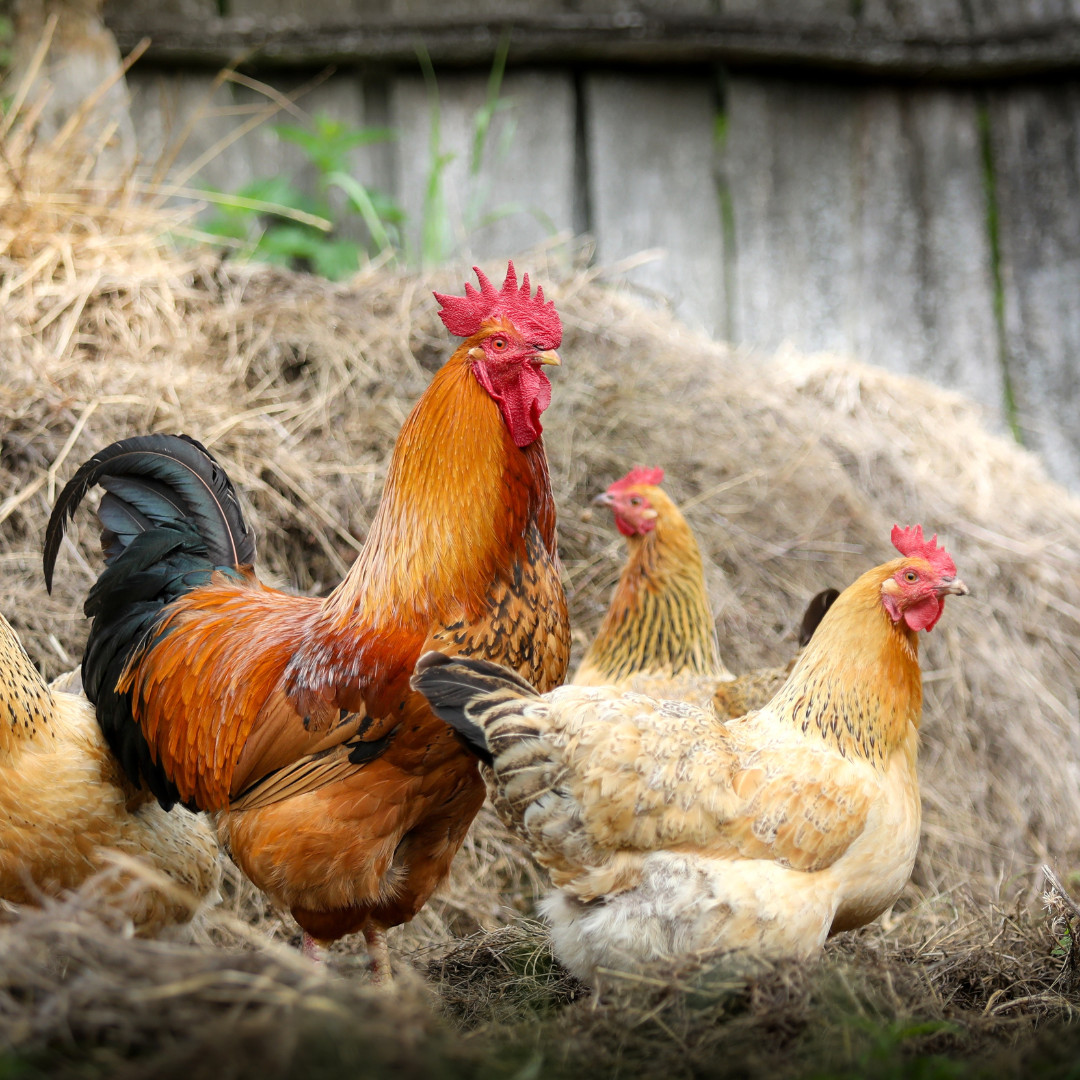
This post may contain affiliate links, which means that I may receive a commission if you make a purchase using these links, with NO additional cost to you.
Chickens are a forgiving livestock, however there are a few things to keep in mind when selecting the prefect chicken breed for your homestead. Some important things to consider are meat vs egg production, broody tendencies, and heat/cold tolerance. Below I’ll highlight some of each and the popular breeds within each category.
Meat or Egg production? Or both?
This is a big factor. Chicken breeds today have been selected for more meat producing genetics or egg production. There are a few breeds that fall into both categories, called dual purpose.
The most popular meat breed is the cochins. They are fast growers and fatten in about 8-10 weeks. 99% of the chicken raised commercially are the cochin breed. However, a breed with rising interest among homesteaders is the Freedom Rangers. They are more agile and smart than the Cochin but do take about 12-14 weeks to fatten.
Chickens that are selected for more egg production tend to lay heavy from about 6 months to 2 years, then they taper off, still laying, but not daily anymore. Popular breeds include Golden Comet, Sapphire Gem, ISA Browns, Australorps (egg record holders), Plymouth Rock, Wyandotte, Ameraucana, and Welsummer.
The Welsummer is a good year-round layer, even if they don’t lay the most eggs, and they handle heat and cold well. Australorps are the record holders, but don’t tend to like the heat. I do have one Australorp hen who insists on raising at least 1 clutch each year since turning 3. The Wyandotte is a good layer and also thrives in cold northern winters, but doesn’t like the extreme heat. They can survive, just may not lay well for you. They also don’t tend to go broody. The Ameraucana breed lays eggs from cream to bright blue color. They will slow down in the winter, but still lay eggs.
Breeds that are considered dual purpose are both good egg layers and can be good meat birds. These tend to not be the best in either category, but they are a happy middle if you want to raise all your own birds. Two of my favorite dual breeds are Buff Orpingtons and Sussex/Speckled Sussex. Both lay eggs well and are a bigger breed which would produce a decent amount of meat. Buff Orpingtons are said to have tendency to be broody which is a plus if you want a hen to raise chicks for you.
In general, heavy breeds tend to not like the heat as much and can slow laying. However, they also tend to tolerate the cold weather a little better. If you want to avoid broody hens, go with a breed that tends to not be broody. Overall, make sure to match your chickens to your environment and you will be happy with your chickens’ productions.
As I've grown in my journey as an entrepreneur, mom, gardener, and livestock owner, I struggled to find a planner that met my needs and kept me organized. So I MADE MY OWN. You can take a look at it on the link blow and buy it on amazon below
Don't want the whole calendar part? I got you! I pulled the gardening and animal care pages out and put them in a book all their own.
Wanting a community to lean into? Join the FREE Helping Your Family Homestead for Food group! This community is for the Mommas, looking to stay home and raise their kids, but unsure how to keep everyone fed and make ends meet. I share tips from my journey from the office, to half the income and feeding my family from home, while maintaining good nourishing food. Tips include: gardening, bulk buying, caning,/preserving, livestock, homesteading, and home remedies. Your family is precious and this group is to help you gain the knowledge and tools to keep your family well and not reliant on outside professionals. Remedies and tips are easy and simple for the busy momma, time is precious after all, including pregnancy, birth, young kids, and illness. Trust your Momma gut again! This community offers the resources + community you need to help get started on your journey and prepare for whatever future you envision.
Starting to garden doesn't have to be hard! I gathered all the tips I've learned over my gardening learning curve and made them into a simple course to jump start your gardening your life.
Supporting Your Family Naturally From the Inside Out community!! This community is for the Mommas, looking to Support Your Family from Nature for Wellness. Tips range from nutrition, herbals, detoxing, natural cleaning, and essential oils. Basically all the things I’ve learned slowly over the past 5+ years if my journey. We have moved off Facebook, so to better serve our community and be able to discuss openly option for providing for your family in the best way possible.
Join the FREE Community
Join the FREE Community
I've had 3 very different pregnancies. After the first traumatic birth, I learned better and how to care for my body naturally and prevent common pregnancy and birth problems before they arise. This quick course will get you the tools you need to have a naturally healthy pregnancy, labor, and delivery. My first pregnancy I had a normal western medicine all the things pregnancy. My second? I flipped to completely natural, no medicine. Bonus: Preventing Preeclampsia Without the Aspirin & Healing from Birth Trauma
Click here to get the stories straight to your email:
For more on wellness tips click here:
For more on homesteading on your budget click here:
For more simple DIY updates click here:
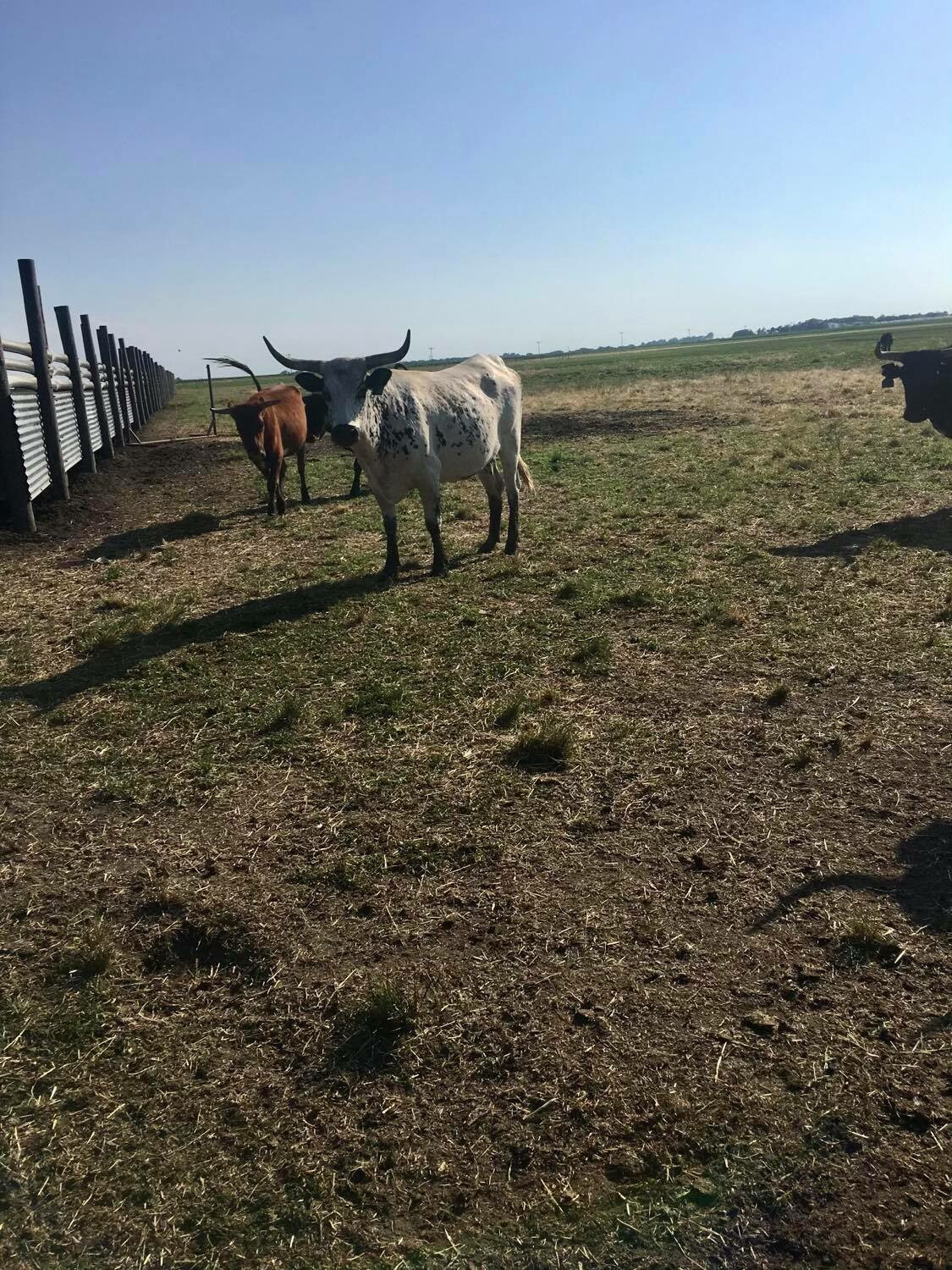
This post may contain affiliate links, which means that I may receive a commission if you make a purchase using these links, with NO additional cost to you.
Training livestock, cattle, sheep, pigs, goats, etc., for basic movement is actually fairly simple. There are a few things to consider keeping you safe and make the training simple for everyone.
First, safety. When working with any livestock it is best to wear closed toes shoes. The larger the animal, the more important your shoes are. When working with larger animals, like cows, you definitely want to invest in leather boots.
Next your biggest training tools. A bucket, some grain for starters, and repetition. Food is a very good motivator for animals. You will have to let them get their head in the bucket at least the first time, or pour the grain out for them, until they figure out the bucket means food. Once they make the connections, you can lead them about anywhere. You can also use a few rocks in a bucket in a pinch once they figure it out. Disclaimer this method works well with small groups. You get large groups of 20+ and it’s not the best method.
You can also train animals to move easily from pasture to pasture. Repetition is key here. The reward, food, is on the next side of the gate. When you move a large herd the same way every time, they quickly figure out what the ques are and often meet you at the gate.
Story time. Before I was at home with my kids, I worked with large herds of cattle, 100 was a small a group typically. Most of the time moving the group to the next pasture across the fence would be done with 1 person. We all moved them the same, with the same pattern, and call. When calves were in the group, we drove through the herd, from the gate, and made sure everyone was up. Hooked up the salt/mineral sled and slowly drove back through the herd calling for them. They quickly followed, knowing new grass was coming. By weaning even, the calves would come to a simple call, because they had been conditioned that new food was coming.
In summary, repetition is key when training animals. Their easy reward is food. Whatever you choose to use as your moving method, do it the same every time and they will quickly be moving without much effort.
As I've grown in my journey as an entrepreneur, mom, gardener, and livestock owner, I struggled to find a planner that met my needs and kept me organized. So I MADE MY OWN. You can take a look at it on the link blow and buy it on amazon below
Don't want the whole calendar part? I got you! I pulled the gardening and animal care pages out and put them in a book all their own.
Wanting a community to lean into? Join the FREE Helping Your Family Homestead for Food group! This community is for the Mommas, looking to stay home and raise their kids, but unsure how to keep everyone fed and make ends meet. I share tips from my journey from the office, to half the income and feeding my family from home, while maintaining good nourishing food. Tips include: gardening, bulk buying, caning,/preserving, livestock, homesteading, and home remedies. Your family is precious and this group is to help you gain the knowledge and tools to keep your family well and not reliant on outside professionals. Remedies and tips are easy and simple for the busy momma, time is precious after all, including pregnancy, birth, young kids, and illness. Trust your Momma gut again! This community offers the resources + community you need to help get started on your journey and prepare for whatever future you envision.
Starting to garden doesn't have to be hard! I gathered all the tips I've learned over my gardening learning curve and made them into a simple course to jump start your gardening your life.
Supporting Your Family Naturally From the Inside Out community!! This community is for the Mommas, looking to Support Your Family from Nature for Wellness. Tips range from nutrition, herbals, detoxing, natural cleaning, and essential oils. Basically all the things I’ve learned slowly over the past 5+ years if my journey. We have moved off Facebook, so to better serve our community and be able to discuss openly option for providing for your family in the best way possible.
Join the FREE Community
Join the FREE Community
I've had 3 very different pregnancies. After the first traumatic birth, I learned better and how to care for my body naturally and prevent common pregnancy and birth problems before they arise. This quick course will get you the tools you need to have a naturally healthy pregnancy, labor, and delivery. My first pregnancy I had a normal western medicine all the things pregnancy. My second? I flipped to completely natural, no medicine. Bonus: Preventing Preeclampsia Without the Aspirin & Healing from Birth Trauma
Click here to get the stories straight to your email:
For more on wellness tips click here:
For more on homesteading on your budget click here:
For more simple DIY updates click here:
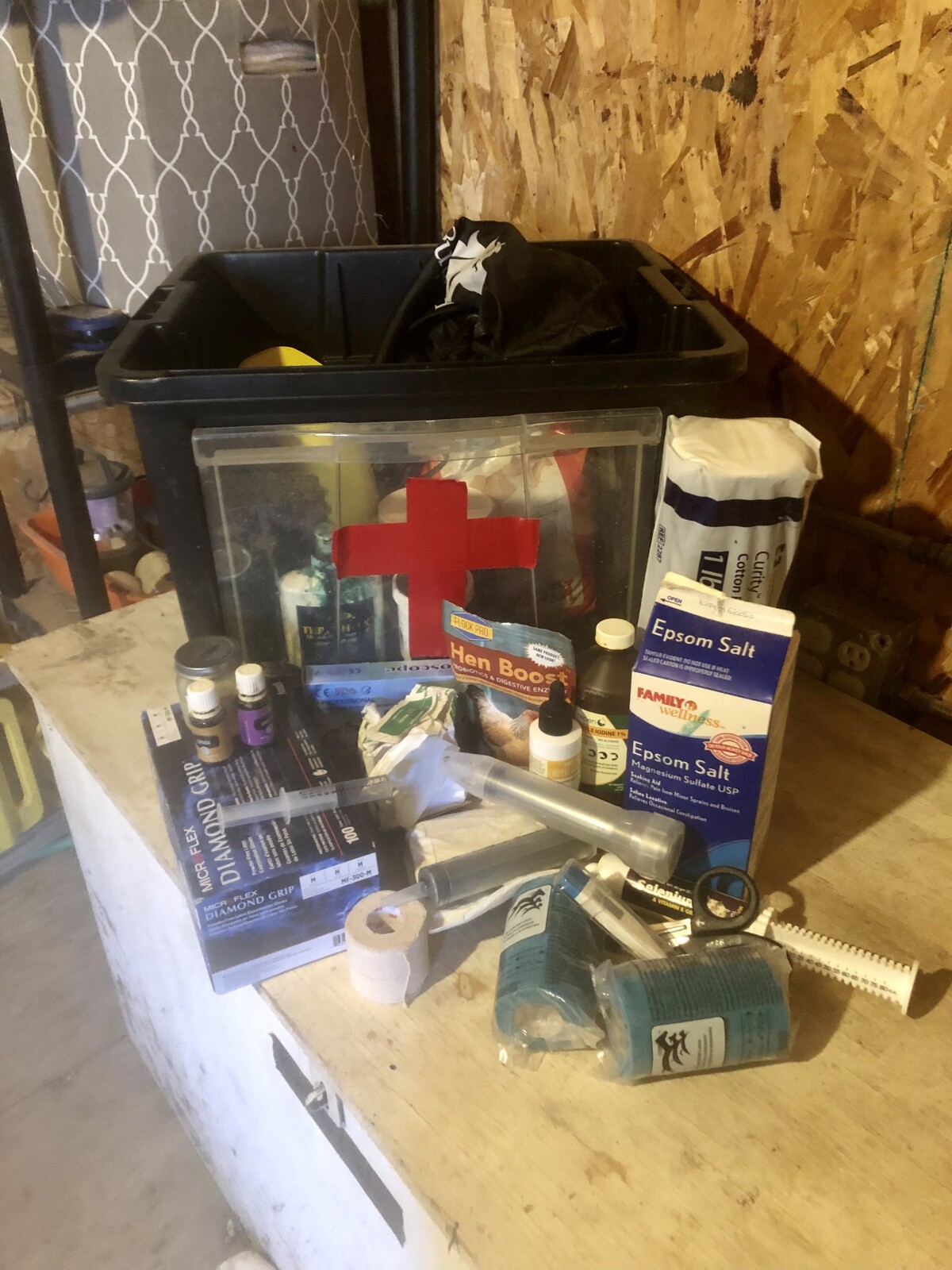
This post may contain affiliate links, which means that I may receive a commission if you make a purchase using these links, with NO additional cost to you.
Animals can bring so much joy and entertainment to our lives. From chickens and guineas, all the way up to horses and bottle lambs, it’s hard not to love having animals around. Even though they bring us joy, there are bound to be some minor injuries along the way. That’s why I always keep a first aid kit handy, just in case! In this blog post, I’ll share with you some of my must-have animal first aid supplies for all species, as well as some specific supplies for birds that live on my homestead.
The Basics For Every Species
No matter what type of animal you have, there are certain items that should be kept in your first aid kit at all times.
- Vet Wrap - Not only is vet wrap incredibly versatile—it can be used for bandaging sprains or holding an ice pack in place—but it also stays put even when wet or dirty. This makes it perfect for animals who spend a lot of time outdoors or get muddy often. Or even the perfect band aid for yourself.
- Gauze Pads - These are essential for cleaning out any wounds that your animals may get. They’re also great for absorbing blood and other fluids from deeper cuts or scrapes so that you can properly assess the damage and treat accordingly.
- Diapers - Believe it or not, diapers are very useful in animal first aid kits! They make an excellent padding material when bandaging large areas (like a horse's leg) because they have soft material on both sides and are thick enough that they won't tear easily. Plus, they're absorbent so they'll help keep the wound area dry during treatment. They are perfect for keeping a foot clean in the case of a foot abscess too. For how to treat that, click here.
- Duck Tape – Honestly this is in the vet kit and tool box. In the first aid kit, duck tape is the top layer in an abscess boot, or the final rings on a leg wrap.
- Calendula Salve - This salve is amazing for treating minor cuts and scrapes on any species of animal. It has anti-inflammatory properties which will help reduce swelling and discomfort while promoting healing and tissue regeneration at the same time. I have used this on scrapes and gashes from untrimmed rooster spurs. Read how to make it here.
- Epson Salt - Epson salt is essential if your animals ever has an abscess. Typically, you dissolve the salt in warm water to make a soak solution.
- Clean Bucket – Having a clean bucket nearby helps you transport water or cleaning solutions easily while keeping your hands free during treatment of your animal’s injury. It also comes in handy if you need to soak any gauze pads before using them on a wound—just fill up the bucket with water, add whatever disinfectant you prefer, then drop the gauze pads into the solution until ready to use!
- Cotton Batting – Cotton batting is great for wrapping around sprains since it provides cushioning without being too tight against the skin which could cause further discomfort for your pet (or livestock). Also works well as stuffing inside bandages if needed!
- Clean Rags – These come in handy when wiping away dirt from wounds before applying topical treatments like calendula salve or iodine solution (which we'll talk about later). They can also be used to clean off tools/supplies between uses so that everything stays sanitary throughout treatment processes.
- Syringes – Can be used to deliver needed antibiotics, but most often I’m using them for drenching, or washing out wound areas to small for a hose.
- Iodine – This is specifically for disinfecting tools or cleaning out abscesses.
- Lavender and Copieba Essential Oil – I use these two with calendula salve, to speed healing and decrease the pain on open wounds.
For The Birds
If you have chickens, geese, turkeys or guineas in your flock then there are two additional products that I would highly recommend having on hand: Nutri-Drink and Hydro-Boost. Nutri-Drink is an electrolyte supplement that helps poultry stay hydrated in hot weather while Hydro-Boost provides essential vitamins and minerals necessary for proper nutrition. Both products can be added to water and they taste great so birds will drink them willingly! Any time a bird is injured or stressed (like newly shipped chicks), I add some to the water for the first day and help out.
Having the right supplies on hand when caring for injured animals can make all the difference between a successful recovery and an unsuccessful one. With this list of must-haves in mind, you will be well prepared if an injury occurs with any of your animals—especially birds! Gather up these items now so that they’re ready when needed; doing so will give you peace of mind knowing that if the worst happens you’ll have everything necessary to provide the best possible care to your beloved pets. Good luck!
As I've grown in my journey as an entrepreneur, mom, gardener, and livestock owner, I struggled to find a planner that met my needs and kept me organized. So I MADE MY OWN. You can take a look at it on the link blow and buy it on amazon below
Don't want the whole calendar part? I got you! I pulled the gardening and animal care pages out and put them in a book all their own.
Wanting a community to lean into? Join the FREE Helping Your Family Homestead for Food group! This community is for the Mommas, looking to stay home and raise their kids, but unsure how to keep everyone fed and make ends meet. I share tips from my journey from the office, to half the income and feeding my family from home, while maintaining good nourishing food. Tips include: gardening, bulk buying, caning,/preserving, livestock, homesteading, and home remedies. Your family is precious and this group is to help you gain the knowledge and tools to keep your family well and not reliant on outside professionals. Remedies and tips are easy and simple for the busy momma, time is precious after all, including pregnancy, birth, young kids, and illness. Trust your Momma gut again! This community offers the resources + community you need to help get started on your journey and prepare for whatever future you envision.
Starting to garden doesn't have to be hard! I gathered all the tips I've learned over my gardening learning curve and made them into a simple course to jump start your gardening your life.
Supporting Your Family Naturally From the Inside Out community!! This community is for the Mommas, looking to Support Your Family from Nature for Wellness. Tips range from nutrition, herbals, detoxing, natural cleaning, and essential oils. Basically all the things I’ve learned slowly over the past 5+ years if my journey. We have moved off Facebook, so to better serve our community and be able to discuss openly option for providing for your family in the best way possible.
Join the FREE Community
Join the FREE Community
I've had 3 very different pregnancies. After the first traumatic birth, I learned better and how to care for my body naturally and prevent common pregnancy and birth problems before they arise. This quick course will get you the tools you need to have a naturally healthy pregnancy, labor, and delivery. My first pregnancy I had a normal western medicine all the things pregnancy. My second? I flipped to completely natural, no medicine. Bonus: Preventing Preeclampsia Without the Aspirin & Healing from Birth Trauma
Click here to get the stories straight to your email:
For more on wellness tips click here:
For more on homesteading on your budget click here:
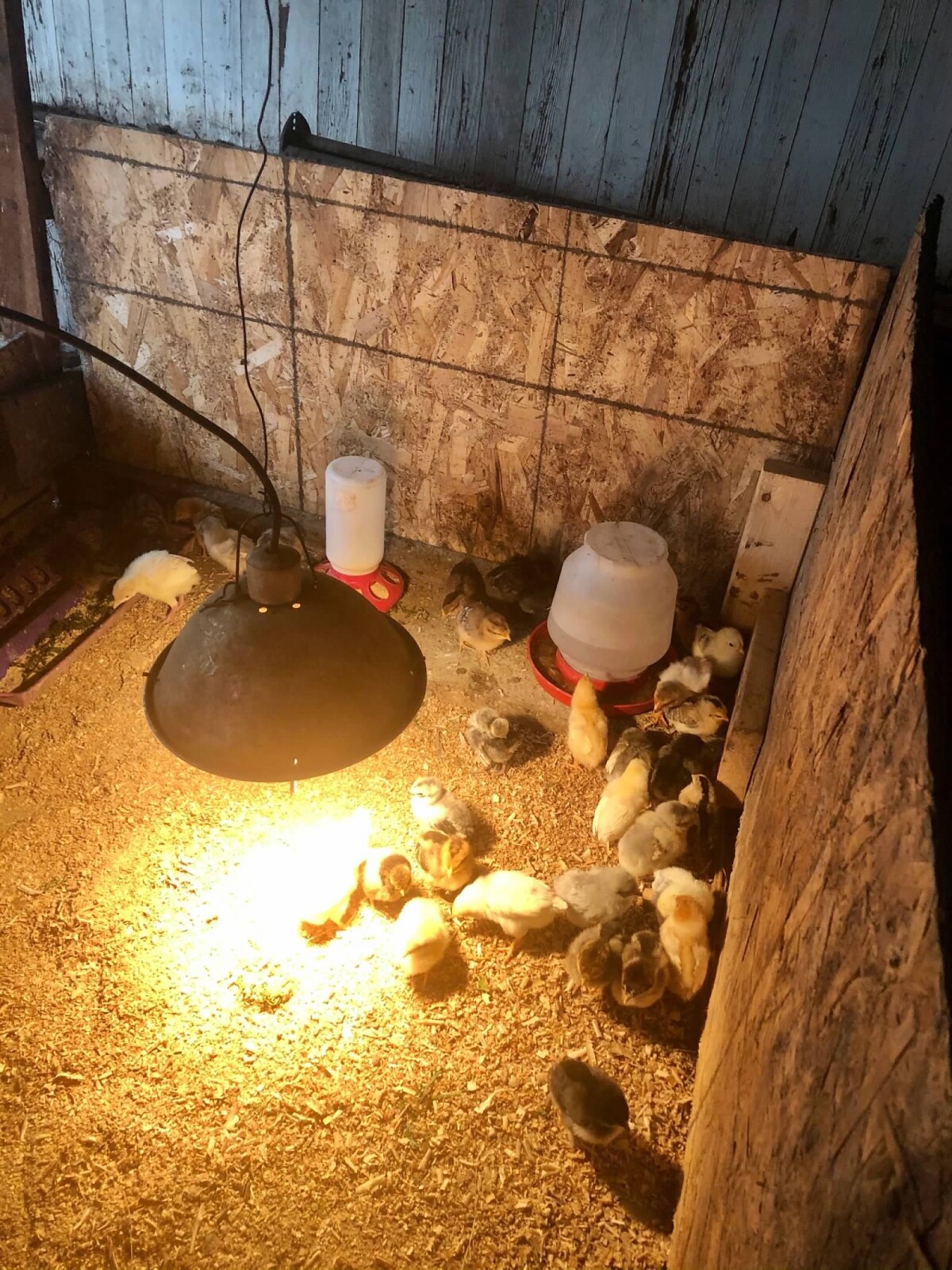
This post may contain affiliate links, which means that I may receive a commission if you make a purchase using these links, with NO additional cost to you.
Starting baby poultry is a great way to kick off your homesteading journey. It can be a bit more labor intensive than other animals, but it doesn’t have to be difficult if you know what tools and supplies you’ll need ahead of time. Here’s a quick breakdown of the basics for raising healthy chicks, guinea, duck, goose, and turkey.
Heat Requirements
Baby poultry need heat to thrive—specifically 90 to 95 degrees Fahrenheit. To help maintain this temperature in their brooding area, you will need heat lamps with red light bulbs (which helps prevent pecking) and a small space called a brooder box. This can be an old stock tank, or boarded area. Throughout the day, check the temperature by observing how the chicks are behaving. If they’re all huddled together under the lamp, they’re cold; if they’re spread out around the room or away from the heat lamp entirely, they’re too warm. At an ideal temperature, some chicks should be under the lamp while others explore and eat/drink on their own. After about a week they can move to a bigger area, mine is shown in the picture.
Watering
In addition to heat requirements, your chicks will also need plenty of water throughout the day—especially when they first arrive. To keep them safe while drinking, elevate their water dish slightly and add small rocks in the bottom so that they don’t accidentally drown themselves while drinking.
Feeding Requirements
Choosing food for your baby poultry can seem tricky at first but it doesn't have to be difficult! The easiest route is to buy chick starter food specially formulated for baby poultry. This type of feed contains all the essential nutrients that your birds need to grow healthy and strong (and no antibiotics are needed). Be sure to monitor your birds closely for signs of malnutrition or poor health—if you notice any problems with their condition after making changes to their diet or environment contact your vet immediately! After about 2-3 weeks, I start to transition the babies to my home mixed feed.
For bedding, the first day or two simply used newspaper, then add shavings once all the chicks have figured out where the food is. Otherwise, babies will peck at the shavings instead of the food, and starve out.
Upon arrival
You will take the chicks out of the box, dip their beak in the water and then the feed, before setting them down. They will all crowd together until you leave, so when checking on them later, you will need to be quiet to see the chicks actual behavior. In general, hold the chicks as little as possible the first 48 hours, to reduce their stress.
Raising baby poultry can seem intimidating at first but it doesn't have to be hard! With just a few basic supplies like heat lamps and chick starter feed, you'll be well on your way towards having healthy birds that are ready for life on your homestead. Keep an eye on them regularly and make sure they're getting enough food and water throughout each day—with proper care you'll soon have a flock of happy birds! Best of luck!
As I've grown in my journey as an entrepreneur, mom, gardener, and livestock owner, I struggled to find a planner that met my needs and kept me organized. So I MADE MY OWN. You can take a look at it on the link blow and buy it on amazon below
Don't want the whole calendar part? I got you! I pulled the gardening and animal care pages out and put them in a book all their own.
Wanting a community to lean into? Join the FREE Helping Your Family Homestead for Food group! This community is for the Mommas, looking to stay home and raise their kids, but unsure how to keep everyone fed and make ends meet. I share tips from my journey from the office, to half the income and feeding my family from home, while maintaining good nourishing food. Tips include: gardening, bulk buying, caning,/preserving, livestock, homesteading, and home remedies. Your family is precious and this group is to help you gain the knowledge and tools to keep your family well and not reliant on outside professionals. Remedies and tips are easy and simple for the busy momma, time is precious after all, including pregnancy, birth, young kids, and illness. Trust your Momma gut again! This community offers the resources + community you need to help get started on your journey and prepare for whatever future you envision.
Starting to garden doesn't have to be hard! I gathered all the tips I've learned over my gardening learning curve and made them into a simple course to jump start your gardening your life.
I've had 3 very different pregnancies. After the first traumatic birth, I learned better and how to care for my body naturally and prevent common pregnancy and birth problems before they arise. This quick course will get you the tools you need to have a naturally healthy pregnancy, labor, and delivery. My first pregnancy I had a normal western medicine all the things pregnancy. My second? I flipped to completely natural, no medicine. Bonus: Preventing Preeclampsia Without the Aspirin & Healing from Birth Trauma
Supporting Your Family Naturally From the Inside Out community!! This community is for the Mommas, looking to Support Your Family from Nature for Wellness. Tips range from nutrition, herbals, detoxing, natural cleaning, and essential oils. Basically all the things I’ve learned slowly over the past 5+ years if my journey. We have moved off Facebook, so to better serve our community and be able to discuss openly option for providing for your family in the best way possible.
Join the Community
Join the Community
Click here to get the stories straight to your email:
For more on wellness tips click here:
For more on homesteading on your budget click here:
For more simple DIY updates click here:
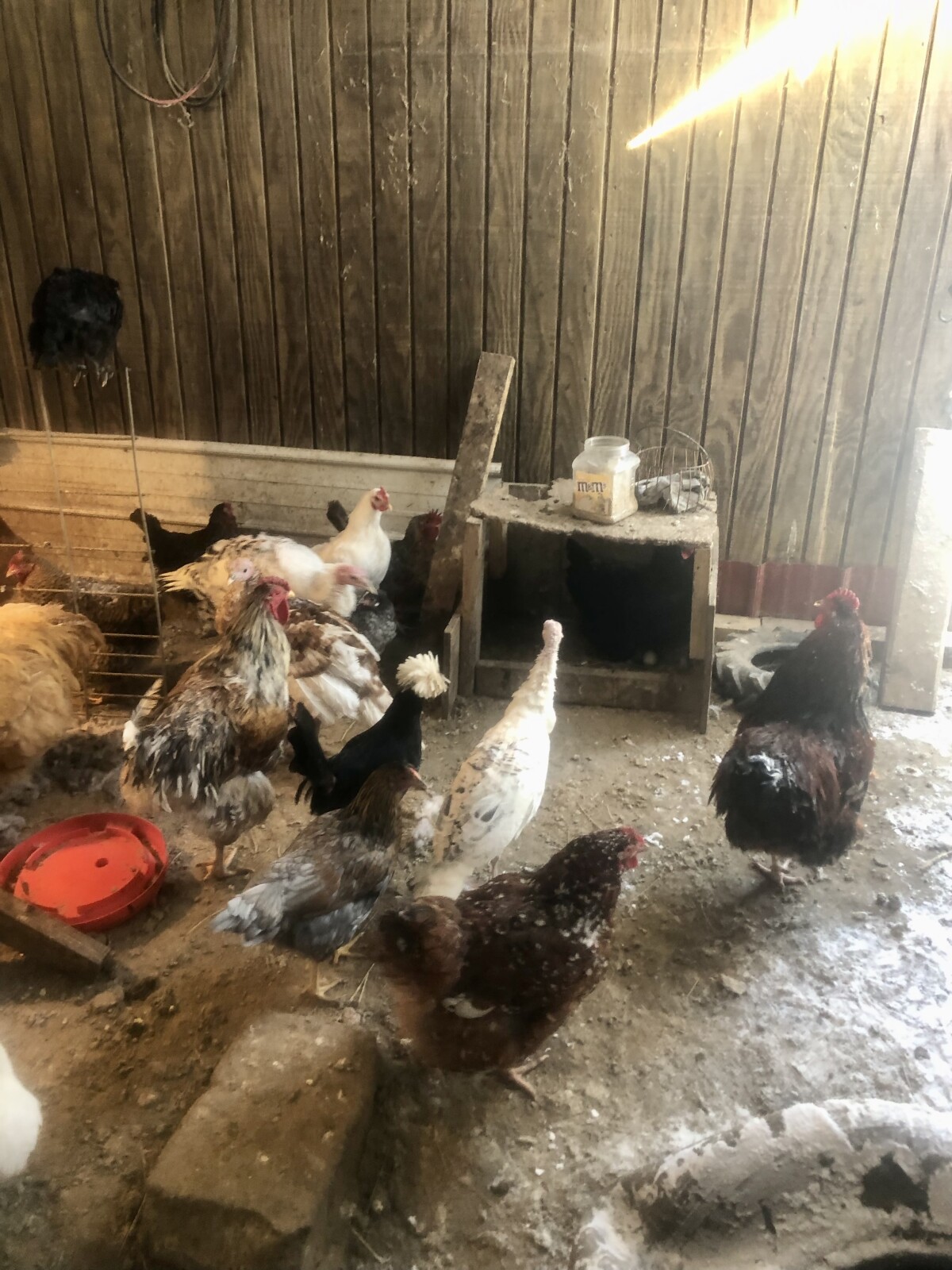
This post may contain affiliate links, which means that I may receive a commission if you make a purchase using these links, with NO additional cost to you.
Chickens are one of the easiest animals to raise, even if you have limited space. Whether you’re living on a city lot or a large farm, chickens can be a great addition to your homestead. Learning how to start is easy and doesn’t require much investment. Let’s look at the basics of raising chickens in your backyard.
Coop Requirements: Chickens need some type of draft free shelter, often called a coop. If you’re just getting started, this could be as simple as an old lean-too shed or barn. You can also build something more elaborate like a chicken palace! No matter what design you choose, make sure it has enough ventilation and enough room for your flock to move around comfortably without overcrowding. If they are completely confined you need 4 square feet of coop space per bird. If you are free ranging, you can shrink this a little, but not a lot.
The coop should also include roosts, this could be as simple as attaching 2x4 boards across the corner of the coop, or using an old ladder found in an old barn. Make sure you have 10 inches of roost space per bird. Nesting boxes are also needed for chickens. Again, this can be as simple as, an old tire or barrel hung up or on the ground. If you want to build one, a 12x12x12 inch box is preferred. You will need 1 box for every 4 laying hens.
Feed & Water Requirements: Another important component when raising chickens is providing them with fresh water and feed. For water, they need either a tray of water or traditional chicken waterers that are available online or through local feed stores. When it comes to food, chickens are quite forgiving so you can keep it simple with store bought feed or mix together your own ingredients from scratch depending on your flock’s needs! I use a mix of corn, distillers, sunflowers, and oats. They also love kitchen scraps of all kinds so supplementing their diet with leftovers from meals is always appreciated! I’ll give more on feed in a later blog.
The final thing to consider when caring for chickens is predator control. To keep predators away from your chickens, build secure fencing around their coop and run area — this will help keep them safe from potential predators such as raccoons or coyotes that may lurk nearby. If you are wanting to free range, you can, but chickens are easy targets for predators. Having a goose or a good rooster to run with your will help alarm the rest of the flock when danger is near in the sky. If you are on a large space, having a livestock guardian dog deters the larger predators like foxes and coyotes.
Raising chickens in your backyard is an easy way to provide fresh eggs for yourself while also having fun taking care of them. All they need is a comfortable home (coop), roosts, nesting boxes, food and water – all items which you can easily find around your house or purchase inexpensively at any farm store. So why not give it a try? With just the basics listed above, you'll be on your way towards becoming a happy homesteader!
As I've grown in my journey as an entrepreneur, mom, gardener, and livestock owner, I struggled to find a planner that met my needs and kept me organized. So I MADE MY OWN. You can take a look at it on the link blow and buy it on amazon below
Don't want the whole calendar part? I got you! I pulled the gardening and animal care pages out and put them in a book all their own.
Wanting a community to lean into? Join the FREE Helping Your Family Homestead for Food group! This community is for the Mommas, looking to stay home and raise their kids, but unsure how to keep everyone fed and make ends meet. I share tips from my journey from the office, to half the income and feeding my family from home, while maintaining good nourishing food. Tips include: gardening, bulk buying, caning,/preserving, livestock, homesteading, and home remedies. Your family is precious and this group is to help you gain the knowledge and tools to keep your family well and not reliant on outside professionals. Remedies and tips are easy and simple for the busy momma, time is precious after all, including pregnancy, birth, young kids, and illness. Trust your Momma gut again! This community offers the resources + community you need to help get started on your journey and prepare for whatever future you envision.
Starting to garden doesn't have to be hard! I gathered all the tips I've learned over my gardening learning curve and made them into a simple course to jump start your gardening your life.
I've had 3 very different pregnancies. After the first traumatic birth, I learned better and how to care for my body naturally and prevent common pregnancy and birth problems before they arise. This quick course will get you the tools you need to have a naturally healthy pregnancy, labor, and delivery. My first pregnancy I had a normal western medicine all the things pregnancy. My second? I flipped to completely natural, no medicine. Bonus: Preventing Preeclampsia Without the Aspirin & Healing from Birth Trauma
Supporting Your Family Naturally From the Inside Out community!! This community is for the Mommas, looking to Support Your Family from Nature for Wellness. Tips range from nutrition, herbals, detoxing, natural cleaning, and essential oils. Basically all the things I’ve learned slowly over the past 5+ years if my journey. We have moved off Facebook, so to better serve our community and be able to discuss openly option for providing for your family in the best way possible.
Join the Community
Join the Community
Click here to get the stories straight to your email:
For more on wellness tips click here:
For more on homesteading on your budget click here:
For more simple DIY updates click here:

This post may contain affiliate links, which means that I may receive a commission if you make a purchase using these links, with NO additional cost to you.
Animals can bring so much joy and entertainment to our lives. From chickens and guineas, all the way up to horses and bottle lambs, it’s hard not to love having animals around. Even though they bring us joy, there are bound to be some minor injuries along the way. That’s why I always keep a first aid kit handy, just in case! In this blog post, I’ll share with you some of my must-have animal first aid supplies for all species, as well as some specific supplies for birds that live on my homestead.
The Basics For Every Species
No matter what type of animal you have, there are certain items that should be kept in your first aid kit at all times.
• Vet Wrap - Not only is vet wrap incredibly versatile—it can be used for bandaging sprains or holding an ice pack in place—but it also stays put even when wet or dirty. This makes it perfect for animals who spend a lot of time outdoors or get muddy often. Or even the perfect band aid for yourself.
• Gauze Pads - These are essential for cleaning out any wounds that your animals may get. They’re also great for absorbing blood and other fluids from deeper cuts or scrapes so that you can properly assess the damage and treat accordingly.
• Diapers - Believe it or not, diapers are very useful in animal first aid kits! They make an excellent padding material when bandaging large areas (like a horse's leg) because they have soft material on both sides and are thick enough that they won't tear easily. Plus, they're absorbent so they'll help keep the wound area dry during treatment. They are perfect for keeping a foot clean in the case of a foot abscess too. For how to treat that, click here.
• Duck Tape – Honestly this is in the vet kit and tool box. In the first aid kit, duck tape is the top layer in an abscess boot, or the final rings on a leg wrap.
• Calendula Salve - This salve is amazing for treating minor cuts and scrapes on any species of animal. It has anti-inflammatory properties which will help reduce swelling and discomfort while promoting healing and tissue regeneration at the same time. I have used this on scrapes and gashes from untrimmed rooster spurs. Read how to make it here.
• Epson Salt - Epson salt is essential if your animals ever has an abscess. Typically, you dissolve the salt in warm water to make a soak solution.
• Clean Bucket – Having a clean bucket nearby helps you transport water or cleaning solutions easily while keeping your hands free during treatment of your animal’s injury. It also comes in handy if you need to soak any gauze pads before using them on a wound—just fill up the bucket with water, add whatever disinfectant you prefer, then drop the gauze pads into the solution until ready to use!
• Cotton Batting – Cotton batting is great for wrapping around sprains since it provides cushioning without being too tight against the skin which could cause further discomfort for your pet (or livestock). Also works well as stuffing inside bandages if needed!
• Clean Rags – These come in handy when wiping away dirt from wounds before applying topical treatments like calendula salve or iodine solution (which we'll talk about later). They can also be used to clean off tools/supplies between uses so that everything stays sanitary throughout treatment processes.
• Syringes – Can be used to deliver needed antibiotics, but most often I’m using them for drenching, or washing out wound areas to small for a hose.
• Iodine – This is specifically for disinfecting tools or cleaning out abscesses.
• Lavender and Copieba Essential Oil – I use these two with calendula salve, to speed healing and decrease the pain on open wounds.
For The Birds
If you have chickens, geese, turkeys or guineas in your flock then there are two additional products that I would highly recommend having on hand: Nutri-Drink and Hydro-Boost. Nutri-Drink is an electrolyte supplement that helps poultry stay hydrated in hot weather while Hydro-Boost provides essential vitamins and minerals necessary for proper nutrition. Both products can be added to water and they taste great so birds will drink them willingly! Any time a bird is injured or stressed (like newly shipped chicks), I add some to the water for the first day and help out.
Having the right supplies on hand when caring for injured animals can make all the difference between a successful recovery and an unsuccessful one. With this list of must-haves in mind, you will be well prepared if an injury occurs with any of your animals—especially birds! Gather up these items now so that they’re ready when needed; doing so will give you peace of mind knowing that if the worst happens you’ll have everything necessary to provide the best possible care to your beloved pets. Good luck!
As I've grown in my journey as an entrepreneur, mom, gardener, and livestock owner, I struggled to find a planner that met my needs and kept me organized. So I MADE MY OWN. You can take a look at it on the link blow and buy it on amazon below
Look inside the 2023 Planner
Buy the 2023 Planner
Don't want the whole calendar part? I got you! I pulled the gardening and animal care pages out and put them in a book all their own.
Look inside the Organizer
Buy the Organizer
Wanting a community to lean into? Join the FREE Helping Your Family Homestead for Food group! This community is for the Mommas, looking to stay home and raise their kids, but unsure how to keep everyone fed and make ends meet. I share tips from my journey from the office, to half the income and feeding my family from home, while maintaining good nourishing food. Tips include: gardening, bulk buying, caning,/preserving, livestock, homesteading, and home remedies. Your family is precious and this group is to help you gain the knowledge and tools to keep your family well and not reliant on outside professionals. Remedies and tips are easy and simple for the busy momma, time is precious after all, including pregnancy, birth, young kids, and illness. Trust your Momma gut again! This community offers the resources + community you need to help get started on your journey and prepare for whatever future you envision.
Join the Free Community
Starting to garden doesn't have to be hard! I gathered all the tips I've learned over my gardening learning curve and made them into a simple course to jump start your gardening your life.
Grab the Gardening Basics Course
Supporting Your Family Naturally From the Inside Out community!! This community is for the Mommas, looking to Support Your Family from Nature for Wellness. Tips range from nutrition, herbals, detoxing, natural cleaning, and essential oils. Basically all the things I’ve learned slowly over the past 5+ years if my journey. We have moved off Facebook, so to better serve our community and be able to discuss openly option for providing for your family in the best way possible.
Join the FREE Community
I've had 3 very different pregnancies. After the first traumatic birth, I learned better and how to care for my body naturally and prevent common pregnancy and birth problems before they arise. This quick course will get you the tools you need to have a naturally healthy pregnancy, labor, and delivery. My first pregnancy I had a normal western medicine all the things pregnancy. My second? I flipped to completely natural, no medicine. Bonus: Preventing Preeclampsia Without the Aspirin & Healing from Birth Trauma
Get the Healthy Pregnancy Course
Click here to get the stories straight to your email:
Sign up for the Blog
For more on wellness tips click here:
Sign up for Wellness tips
For more on homesteading on your budget click here:
Sign up for Homesteading Tips
Animals can bring so much joy and entertainment to our lives. From chickens and guineas, all the way up to horses and bottle lambs, it’s hard not to love having animals around. Even though they bring us joy, there are bound to be some minor injuries along the way. That’s why I always keep a first aid kit handy, just in case! In this blog post, I’ll share with you some of my must-have animal first aid supplies for all species, as well as some specific supplies for birds that live on my homestead.
The Basics For Every Species
No matter what type of animal you have, there are certain items that should be kept in your first aid kit at all times.
• Vet Wrap - Not only is vet wrap incredibly versatile—it can be used for bandaging sprains or holding an ice pack in place—but it also stays put even when wet or dirty. This makes it perfect for animals who spend a lot of time outdoors or get muddy often. Or even the perfect band aid for yourself.
• Gauze Pads - These are essential for cleaning out any wounds that your animals may get. They’re also great for absorbing blood and other fluids from deeper cuts or scrapes so that you can properly assess the damage and treat accordingly.
• Diapers - Believe it or not, diapers are very useful in animal first aid kits! They make an excellent padding material when bandaging large areas (like a horse's leg) because they have soft material on both sides and are thick enough that they won't tear easily. Plus, they're absorbent so they'll help keep the wound area dry during treatment. They are perfect for keeping a foot clean in the case of a foot abscess too. For how to treat that, click here.
• Duck Tape – Honestly this is in the vet kit and tool box. In the first aid kit, duck tape is the top layer in an abscess boot, or the final rings on a leg wrap.
• Calendula Salve - This salve is amazing for treating minor cuts and scrapes on any species of animal. It has anti-inflammatory properties which will help reduce swelling and discomfort while promoting healing and tissue regeneration at the same time. I have used this on scrapes and gashes from untrimmed rooster spurs. Read how to make it here.
• Epson Salt - Epson salt is essential if your animals ever has an abscess. Typically, you dissolve the salt in warm water to make a soak solution.
• Clean Bucket – Having a clean bucket nearby helps you transport water or cleaning solutions easily while keeping your hands free during treatment of your animal’s injury. It also comes in handy if you need to soak any gauze pads before using them on a wound—just fill up the bucket with water, add whatever disinfectant you prefer, then drop the gauze pads into the solution until ready to use!
• Cotton Batting – Cotton batting is great for wrapping around sprains since it provides cushioning without being too tight against the skin which could cause further discomfort for your pet (or livestock). Also works well as stuffing inside bandages if needed!
• Clean Rags – These come in handy when wiping away dirt from wounds before applying topical treatments like calendula salve or iodine solution (which we'll talk about later). They can also be used to clean off tools/supplies between uses so that everything stays sanitary throughout treatment processes.
• Syringes – Can be used to deliver needed antibiotics, but most often I’m using them for drenching, or washing out wound areas to small for a hose.
• Iodine – This is specifically for disinfecting tools or cleaning out abscesses.
• Lavender and Copieba Essential Oil – I use these two with calendula salve, to speed healing and decrease the pain on open wounds.
For The Birds
If you have chickens, geese, turkeys or guineas in your flock then there are two additional products that I would highly recommend having on hand: Nutri-Drink and Hydro-Boost. Nutri-Drink is an electrolyte supplement that helps poultry stay hydrated in hot weather while Hydro-Boost provides essential vitamins and minerals necessary for proper nutrition. Both products can be added to water and they taste great so birds will drink them willingly! Any time a bird is injured or stressed (like newly shipped chicks), I add some to the water for the first day and help out.
Having the right supplies on hand when caring for injured animals can make all the difference between a successful recovery and an unsuccessful one. With this list of must-haves in mind, you will be well prepared if an injury occurs with any of your animals—especially birds! Gather up these items now so that they’re ready when needed; doing so will give you peace of mind knowing that if the worst happens you’ll have everything necessary to provide the best possible care to your beloved pets. Good luck!
As I've grown in my journey as an entrepreneur, mom, gardener, and livestock owner, I struggled to find a planner that met my needs and kept me organized. So I MADE MY OWN. You can take a look at it on the link blow and buy it on amazon below
Look inside the 2023 Planner
Buy the 2023 Planner
Don't want the whole calendar part? I got you! I pulled the gardening and animal care pages out and put them in a book all their own.
Look inside the Organizer
Buy the Organizer
Wanting a community to lean into? Join the FREE Helping Your Family Homestead for Food group! This community is for the Mommas, looking to stay home and raise their kids, but unsure how to keep everyone fed and make ends meet. I share tips from my journey from the office, to half the income and feeding my family from home, while maintaining good nourishing food. Tips include: gardening, bulk buying, caning,/preserving, livestock, homesteading, and home remedies. Your family is precious and this group is to help you gain the knowledge and tools to keep your family well and not reliant on outside professionals. Remedies and tips are easy and simple for the busy momma, time is precious after all, including pregnancy, birth, young kids, and illness. Trust your Momma gut again! This community offers the resources + community you need to help get started on your journey and prepare for whatever future you envision.
Join the Free Community
Starting to garden doesn't have to be hard! I gathered all the tips I've learned over my gardening learning curve and made them into a simple course to jump start your gardening your life.
Grab the Gardening Basics Course
Supporting Your Family Naturally From the Inside Out community!! This community is for the Mommas, looking to Support Your Family from Nature for Wellness. Tips range from nutrition, herbals, detoxing, natural cleaning, and essential oils. Basically all the things I’ve learned slowly over the past 5+ years if my journey. We have moved off Facebook, so to better serve our community and be able to discuss openly option for providing for your family in the best way possible.
Join the FREE Community
I've had 3 very different pregnancies. After the first traumatic birth, I learned better and how to care for my body naturally and prevent common pregnancy and birth problems before they arise. This quick course will get you the tools you need to have a naturally healthy pregnancy, labor, and delivery. My first pregnancy I had a normal western medicine all the things pregnancy. My second? I flipped to completely natural, no medicine. Bonus: Preventing Preeclampsia Without the Aspirin & Healing from Birth Trauma
Get the Healthy Pregnancy Course
Click here to get the stories straight to your email:
Sign up for the Blog
For more on wellness tips click here:
Sign up for Wellness tips
For more on homesteading on your budget click here:
Sign up for Homesteading Tips
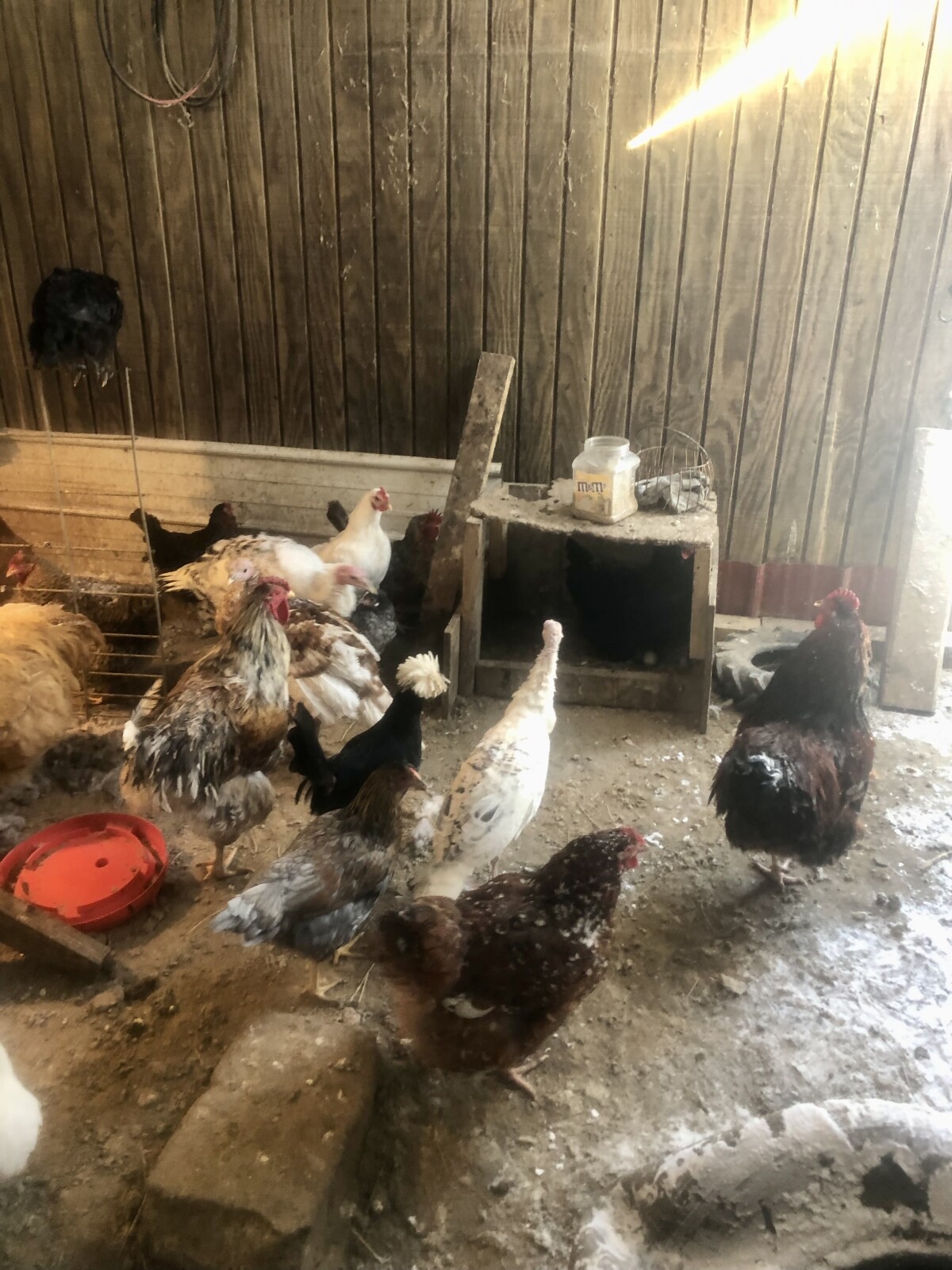
This post may contain affiliate links, which means that I may receive a commission if you make a purchase using these links, with NO additional cost to you.
Contrary to popular belief, you can have chickens in most places. Even if you live in the city and don’t think you can accommodate them. Chickens are one of the few types of livestock that take up very little space and still give you so many benefits. Laying hens will provide eggs for your family, plus make great disposals for kitchen and garden scraps. If you want to raise meat birds, it’s possible in most places too! Some cities may have limits as to how many and what kinds (no roosters) but they usually allow some type of chicken keeping. Check with your local ordinance for specifics. Let’s explore more about urban chicken keeping!
Knowing Your City Ordinances
Before you even think about getting chickens, check with your city ordinances. Some cities/towns may have limits or restrictions as to how many chickens you can have or whether or not you can have roosters on the property. This is especially important if there are neighborhood associations that could potentially cite you if they find out about your chickens before you get it approved by the local government. Make sure to check those first!
Space Considerations
Chickens don’t need much space; however, there are some things that should be taken into consideration such as the size of their coop and run area, plus having enough space for a place where they can scratch and dust bathe. Having at least 4 square feet per bird inside their coop is recommended, plus 10-15 square feet per bird in their run area outside. To little space and they become stressed which means less eggs for you.
They also need a secure place where they can get away from predators like raccoons, possums, hawks, and cats. A small backyard is usually sufficient to accommodate three or four hens; however, if you're raising meat birds that require more space than laying hens then your backyard needs will increase accordingly. If possible, try to keep this area away from any windy areas which could make them cold and uncomfortable during winter months.
Feed & Water Considerations
Chickens need a specific type of food that's formulated specifically for their nutritional needs — while they might enjoy eating leftovers from the table every once in a while, those foods should not make up the majority of their diet. Additionally, depending on where you live, there may be some restrictions for storing large amounts of feed due to vermin control laws or zoning regulations; again, this is something you should check into before committing to owning chickens. Even if you don’t have a large space to buy bulk ingredients, you can find preformulated bagged food at local farm stores.
A feeder and water station should also be taken into consideration when planning out your urban chicken keeping set up. You would need one feeder per 6-10 birds plus a water station big enough for all of them to drink from without overcrowding each other while they do so. The type of water or feeder is not important, you can find or reuse old stuff too, just make sure that these containers have lids so that food doesn’t get wet due to rain or rodents trying to get into it during nighttime hours when the chickens aren’t around (they usually go back inside at dusk).
Urban chicken keeping is becoming more popular due to its low-cost investment yet high return benefits of fresh eggs daily along with having an easy disposal system for kitchen scraps & garden waste. However, knowing local ordinances is always important before investing too much into any type of livestock keeping project; after all nobody wants fines added onto already expensive projects! But once everything gets approved by the local government then it's time to start thinking about ways we can make our future chicken flock comfortable while still having plenty of room left over in our yards for other activities like gardening or playing sports with friends & family members alike! All in all, urban chicken keeping is definitely something worth exploring further - go ahead & see what options might be available near where YOU live today!
As I've grown in my journey as an entrepreneur, mom, gardener, and livestock owner, I struggled to find a planner that met my needs and kept me organized. So I MADE MY OWN. You can take a look at it on the link blow and buy it on amazon below
Don't want the whole calendar part? I got you! I pulled the gardening and animal care pages out and put them in a book all their own.
Wanting a community to lean into? Join the FREE Helping Your Family Homestead for Food group! This community is for the Mommas, looking to stay home and raise their kids, but unsure how to keep everyone fed and make ends meet. I share tips from my journey from the office, to half the income and feeding my family from home, while maintaining good nourishing food. Tips include: gardening, bulk buying, caning,/preserving, livestock, homesteading, and home remedies. Your family is precious and this group is to help you gain the knowledge and tools to keep your family well and not reliant on outside professionals. Remedies and tips are easy and simple for the busy momma, time is precious after all, including pregnancy, birth, young kids, and illness. Trust your Momma gut again! This community offers the resources + community you need to help get started on your journey and prepare for whatever future you envision.
Starting to garden doesn't have to be hard! I gathered all the tips I've learned over my gardening learning curve and made them into a simple course to jump start your gardening your life.
I've had 3 very different pregnancies. After the first traumatic birth, I learned better and how to care for my body naturally and prevent common pregnancy and birth problems before they arise. This quick course will get you the tools you need to have a naturally healthy pregnancy, labor, and delivery. My first pregnancy I had a normal western medicine all the things pregnancy. My second? I flipped to completely natural, no medicine. Bonus: Preventing Preeclampsia Without the Aspirin & Healing from Birth Trauma
Supporting Your Family Naturally From the Inside Out community!! This community is for the Mommas, looking to Support Your Family from Nature for Wellness. Tips range from nutrition, herbals, detoxing, natural cleaning, and essential oils. Basically all the things I’ve learned slowly over the past 5+ years if my journey. We have moved off Facebook, so to better serve our community and be able to discuss openly option for providing for your family in the best way possible.
Join the Community
Join the Community
Click here to get the stories straight to your email:
For more on wellness tips click here:
For more on homesteading on your budget click here:
For more simple DIY updates click here:

This post may contain affiliate links, which means that I may receive a commission if you make a purchase using these links, with NO additional cost to you.
Caring for animals is a rewarding experience. They bring joy, companionship, and even produce food or fiber. But taking care of animals is also a big responsibility! Whether you’re caring for chickens, goats, cows, pigs or any other homestead animal, there are certain basic needs all animals require in order to stay healthy and happy. In this article I will discuss the basics of animal care - shelter, water, food and safety - so that you can make sure your furry (or feathered) friends are getting everything they need.
Shelter & Safety
All animals need some kind of shelter to protect them from weather, predators, and other dangers. Even if you don’t have a large barn or coop, something as simple as a shaded area can provide protection from the elements. Make sure your animal has enough space to move around comfortably in their shelter. Even if that means a shade tree in the pasture for cattle.
Create boundaries around your property so that your animals don’t wander off; also make sure there aren't any hazardous materials nearby that could harm them (like toxic chemicals). Keep an eye out for predators like coyotes or foxes that could be lurking near your homestead—if necessary, install fencing or other deterrents, like livestock guardians, for added protection. Keeping animals safe also means ensuring access to clean living spaces free from sharp objects or other hazards that could cause injury or death to an unsuspecting animal. Finally, it’s important not to overcrowd the living area and shelter; too many animals can lead to fights which could result in serious injury or death.
Water
Animals require clean drinking water every day in order to stay hydrated and healthy. Make sure your animal’s water source is always full and that it’s changed regularly (at least once a week). During the winter months be sure to provide warm water as well; cold water can freeze quickly in the winter so having a heated water bowl is essential for keeping your animals hydrated when temperatures drop below freezing.
Food
Different types of animals have different dietary needs, in order to grow and stay healthy, so it’s important to research what type of food is best for your specific animal (more to come on specific animals). In general though, all animals need a balanced diet which includes carbohydrates (grains typically), proteins (for the amino acids), vitamins/minerals (supplements) and fiber (grass/hay). It’s also important to monitor how much they eat—too much food can lead to obesity or other health issues. Additionally, some types of animals may require special diets depending on their age or health status so make sure you check with your veterinarian if you have any questions about what type of food your animal needs.
Taking care of animals doesn’t have to be complex or intimidating—the basics remain relatively universal across different species! The key components are shelter, safety, water, and food; if you keep those four things in mind then you should be able to give your animals everything they need for happy lives on your homestead!
As I've grown in my journey as an entrepreneur, mom, gardener, and livestock owner, I struggled to find a planner that met my needs and kept me organized. So I MADE MY OWN. You can take a look at it on the link blow and buy it on amazon below
Don't want the whole calendar part? I got you! I pulled the gardening and animal care pages out and put them in a book all their own.
Wanting a community to lean into? Join the FREE Helping Your Family Homestead for Food group! This community is for the Mommas, looking to stay home and raise their kids, but unsure how to keep everyone fed and make ends meet. I share tips from my journey from the office, to half the income and feeding my family from home, while maintaining good nourishing food. Tips include: gardening, bulk buying, caning,/preserving, livestock, homesteading, and home remedies. Your family is precious and this group is to help you gain the knowledge and tools to keep your family well and not reliant on outside professionals. Remedies and tips are easy and simple for the busy momma, time is precious after all, including pregnancy, birth, young kids, and illness. Trust your Momma gut again! This community offers the resources + community you need to help get started on your journey and prepare for whatever future you envision.
Starting to garden doesn't have to be hard! I gathered all the tips I've learned over my gardening learning curve and made them into a simple course to jump start your gardening your life.
Supporting Your Family Naturally From the Inside Out community!! This community is for the Mommas, looking to Support Your Family from Nature for Wellness. Tips range from nutrition, herbals, detoxing, natural cleaning, and essential oils. Basically all the things I’ve learned slowly over the past 5+ years if my journey. We have moved off Facebook, so to better serve our community and be able to discuss openly option for providing for your family in the best way possible.
Join the FREE Community
Join the FREE Community
I've had 3 very different pregnancies. After the first traumatic birth, I learned better and how to care for my body naturally and prevent common pregnancy and birth problems before they arise. This quick course will get you the tools you need to have a naturally healthy pregnancy, labor, and delivery. My first pregnancy I had a normal western medicine all the things pregnancy. My second? I flipped to completely natural, no medicine. Bonus: Preventing Preeclampsia Without the Aspirin & Healing from Birth Trauma
Click here to get the stories straight to your email:
For more on wellness tips click here:
For more on homesteading on your budget click here:
For more simple DIY updates click here:

